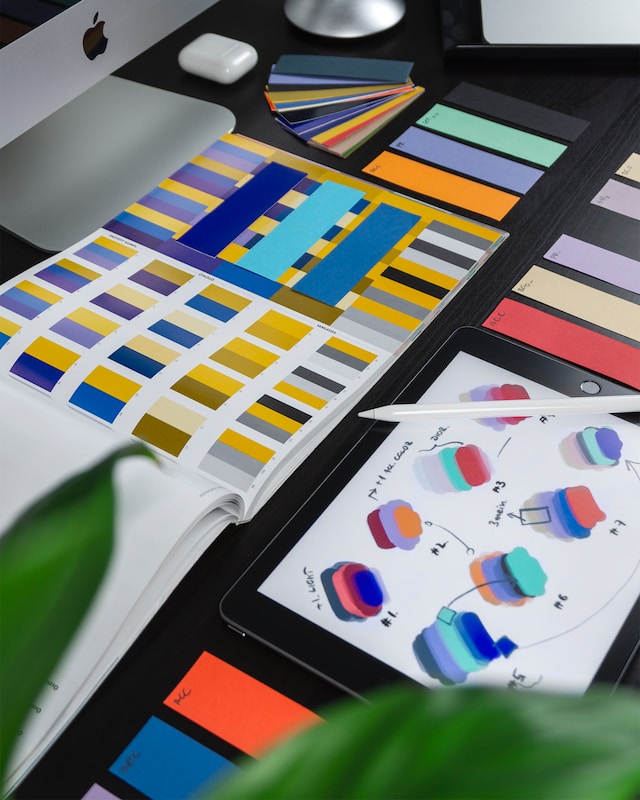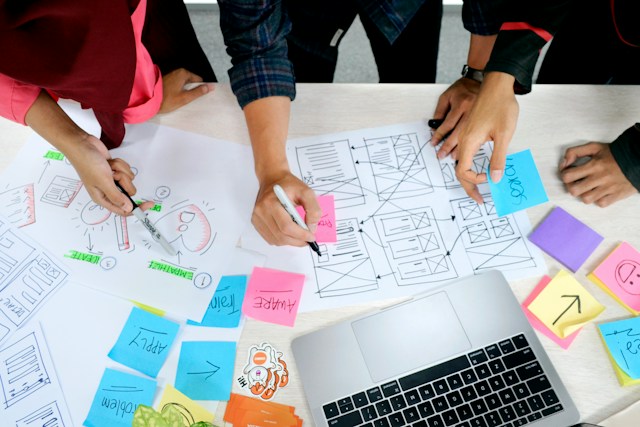In the 1990s, cognitive psychologist Don Norman coined the term User Experience (UX). Since then, Norman has gone to great lengths to define UX and its principles. However, since the 90s, a lot has changed in this field thanks to new technologies and changing consumer preferences. The UX design process has changed quite a bit, too.
The modern design process is the most important part of digital product design. As they say, it’s about the journey, not the destination! Understanding the different stages of the UX journey is crucial if you want to design products with amazing user interfaces.
From research to testing and finally the launch, these are the steps you need to know about.
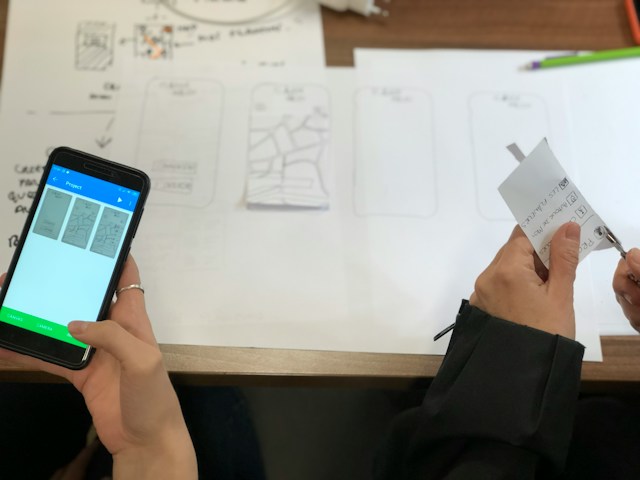
What Is UX Design?
So, what is UX design? UX is about creating experiences that solve problems for the end users of a product. The UX design process, meanwhile, refers to the steps involved.
Since UX is all about problem-solving, the design process is all about identifying and addressing those problems. Let’s say your target audience is young professionals struggling with fitting their fitness goals into their busy lives. The design process aims to find out what their problems are and what you could do to address those problems. Eventually, you create an app for smart workout scheduling that makes it easy to find last-minute gym classes nearby.
The UX design process aims to build products that provide real value for the end user. There are several steps involved, which means multiple teams may lend their services. These UX design process steps include:
- User research
- Defining the problem
- Designing the solution
- Prototyping and wireframing
- Validating with user testing
- Building
- Quality assurance
- Launch
As with most design phases, these steps aren’t necessarily linear. You may need to go back and forth around prototyping and validating until you finally get it right. Remember, UX is all about the end user. So, if you try something and it doesn’t work, it’s back to the drawing board. Your job is only done when the product actually solves the user’s problem.
It’s an iterative process that centers around the consumer.
Step 1: User Personas
First, define your user personas and start to think about the kind of problem you want to address. Everything begins with an idea.
Start to narrow down your exact target audience. Give them a name, age, profession, and other important details. You can have multiple user personas. Make sure each of them is relevant to the industry and project you have in mind.
This step will help you in your research, allowing you to contact people who fit your target audience.
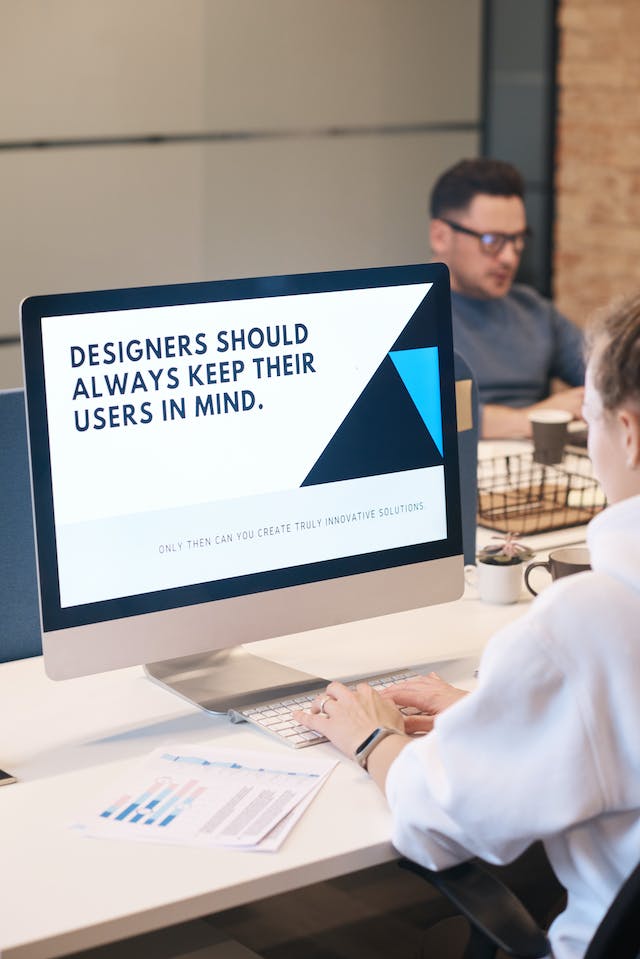
Step 2: User Research
User research is one of the most crucial aspects of the design phase. Without knowing your users through and through, you can’t design a product that works for them.
This step involves observing or getting feedback from real users to figure out what problems they have. They might even have their own ideas about what they require from a solution.
There are different ways to perform user research:
- Quantitative: Checking measurable data such as clicks or how long they spend doing something.
- Qualitative: Learning their thoughts, feelings, and opinions.
Here are some ways that UX researchers investigate their users:
- Surveys
- A/B tests
- Interviews
- First-click tests
- Eye-tracking
- Analyzing competitor brands
Of course, some of these methods are costly and time-consuming, whereas others are better for start-ups on a budget. With the results in mind, you can analyze your findings and devise a strategy.
Step 3: Define the Problem
When you have collected the data, the next step is to analyze your findings. Your product teams will find your research useful, so make sure you collate the findings and create actionable insights. Having a UX research report is also useful for pitching to stakeholders.
The next phase of the design project is defining the problem and pinning it down. You can call upon your research to inform this decision.
It’s useful to ask yourself questions during this phase:
- What do our users need?
- Why does this product need to exist?
- What problems will this solve?
These are all questions that relate to your users and the problems they have. However, you also need to ask yourself a different set of questions. Namely, these “how might we…” questions will help you reach a solution.
Returning to the earlier example, “How might we make it easier for busy people to stick to a workout schedule?” Or, “How might we make it easier for people to find gym classes nearby?”
Armed with a low-fi concept sketch, you can move on to the next step of the design process.
Step 4: User Journey Mapping and Design
The next step is to begin designing. This is where you come up with solutions to the problem and choose one solution in the end. There are some important design decisions to make.
On a smaller-scale project, like adding a feature to an existing app, this could include how the feature works. Decide on its functionality, where it will appear in the app, and how the user will access it. Then, you can decide on the architecture of the new feature.
During this phase, you don’t get to give up on the UX design thinking process. Remember that this is an iterative process that requires a lot of honing.
It’s useful during this phase to perform user journey mapping. Think about how the user will go through their task and use the app. Try to think from the point of view of someone who has never seen or used the app before.
With the user journey in mind, you can make your new feature watertight. It ensures that the end user will find your product useful and that you don’t make it overcomplicated.
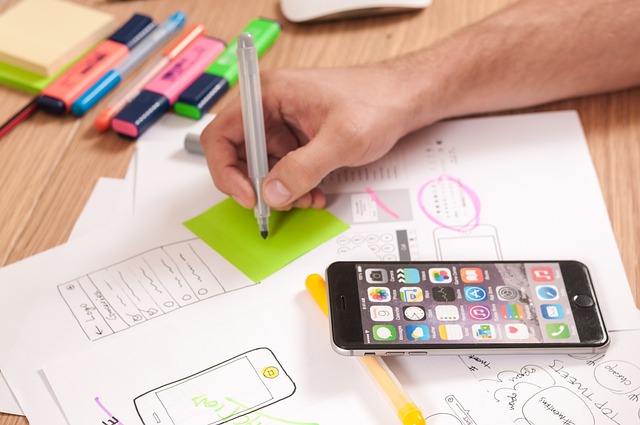
Step 5: Prototyping and Wireframing
With a firmer idea in mind, it’s time to start wireframing. Pass all the details onto your development team to begin the design process.
Prototypes are visual representations of the product. There are a couple of prototypes that your team might come up with:
- Paper prototypes: paper representations of digital products. They can help to realize concepts and designs with sketches while keeping costs low.
- High-fidelity prototypes: these are computer-based and allow realistic user interactions. This is much closer to the true representation of the interface.
The second type of prototype is interactive. As a result, test users and stakeholders can interact with it as though it’s real.
The idea behind prototyping is to provide you with something to test, ironing out the kinks. It means you can work out the details before spending money on a live product. Plus, it lets you check that the design you came up with is genuinely user-friendly.
Remember, you may need to go back to the design phase if things don’t work out. That’s precisely the purpose of the prototyping phase.
Step 6: Validating
Validating refers to testing your product. Hand the prototypes to test users to see how usable and effective the product is. You should use real users who have no other experience of the product. This will help you determine if the product is accessible and intuitive.
User testing might also bring up new issues that you hadn’t thought of during prototyping. When you encounter a problem, you have ample time to fix it before the development phase. As a result, you can avoid irritating your actual users down the line.
Proper usability testing is essential to ensure your product really works. Doing it properly ensures that the process is working, guaranteeing the end user gets a good result.
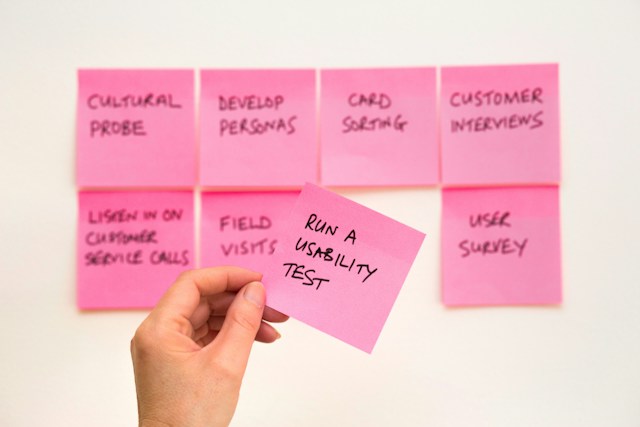
Step 7: Build
Eventually, it comes time to build the product. Your design team can build a functional, accessible product based on everything you learned during research and testing.
Hopefully, this process will run smoothly thanks to the work you’ve already put in.
Step 8: Quality Assurance
The Nielsen Norman Group says that quality assurance (QA) and user experience have a two-way relationship. Indeed, a digital product is only so good as it is usable.
Great UX requires QA thinking, and beyond the interface, many other quality issues affect the overall experience.
Ultimately, you want to have a quality design. This means checking things like:
- Response time and loading speed
- Efficiency of use
- Bugs and crashes
It’s crucial to iron out all of this before you go to launch. Otherwise, the design might be excellent, but you will still have unsatisfied users.
Step 9: Launch
Finally, it’s time to launch. You can launch your digital product and take it to market, confident in its user experiences.
After the launch, your job is not done. The design process is an ongoing cycle. You will need to repeat all or parts of this process to continually improve your product. Whether it’s to keep up with consumer demand or the ever-changing landscape of technology, updates are crucial.
The goal is to keep making the customer experience better and better. Keep making small changes to the design based on feedback and research. By constantly iterating, you can keep your product relevant and usable for years to come.
What Different Roles Are Involved in the UX Process?
A lot of people collaborate to make UX work effectively. It’s not just an iterative process but a collaborative one. The more people you have on board to contribute ideas, the better!
Here are some of the people involved.
- Researchers: to work on the research and validation stages.
- Content writers: content writers can ensure the copy aligns with the design. They can also collate research to pitch to stakeholders.
- UX designers: lead the design phase. They may also play an important role at other stages of the process.
- UI designers: user interface (UI) experts collaborate closely with UX designers. They are especially important in the prototyping stage.
- Developers: work on the validation stage to transform prototypes into live products.
In smaller companies, there may be generalists who work across the entire process. However, for larger projects, specialists are often necessary.
How the UX Design Process Has Changed
Every object has an intended use. This includes products that existed before digital technology and before we had the term “UX.” However, the way we design products with user experience in mind has greatly changed since the advent of digital technology.
UX design is now a specific discipline that’s about understanding user needs. When the term arose in the 90s, UX was already referring to technology. However, it used to be about data organization and using digital interfaces. It did not concern itself with the aesthetics of these interfaces.
Now, most UX revolves around designing websites and apps for the general public. As a result, aesthetics are much more a part of it. User experience and user interfaces are now tightly intertwined.
In classical UX design, every stage of the process was linear. Product developers would complete one step before moving on to the next. This was ideal in a world where digital products remained the same for several years.
Now, we live in an environment where developers update websites and apps much more frequently, sometimes monthly! As a result, UX has changed to suit this environment. UX teams now need to work responsively. The design process involves much more adaptation, flexibility, and iteration.
With this in mind, UX teams can create genuinely helpful digital products that users love.
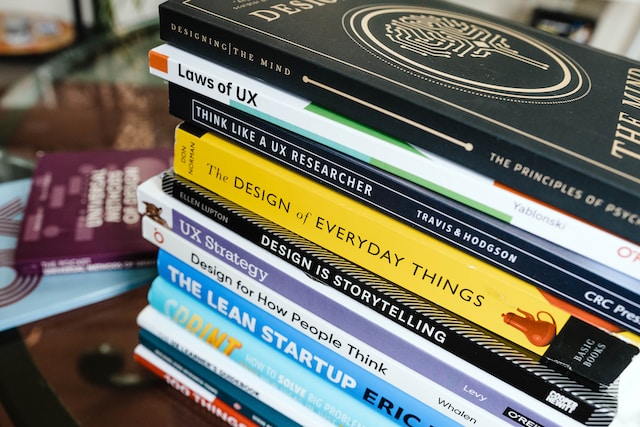
Keeping the User at the Center of the UX Design Process
The UX design process, as it stands today, is a fundamental framework for creating digital products. The core principle is to prioritize the user’s needs and experience. This should guide you every step of the way.
UX design isn’t just about aesthetics. It’s about solving problems and delivering real value to users. With this in mind, the journey of design is as important as the end destination. It’s a constant process of honing and improving, from defining user personas to defining the problem and prototyping. All of these steps link together.
The key takeaway is that the user should always come first in the UX design process. This means from the initial idea phase to the launch of the product and beyond. This takeaway guides designers to create digital products that not only meet user needs but exceed their expectations.
If you’re looking for design inspiration, why not learn from proven products? Page Flows is a helpful resource for finding interactive design ideas. Get started today to access our growing library of user flow recordings and stay up-to-date with the latest trends.




